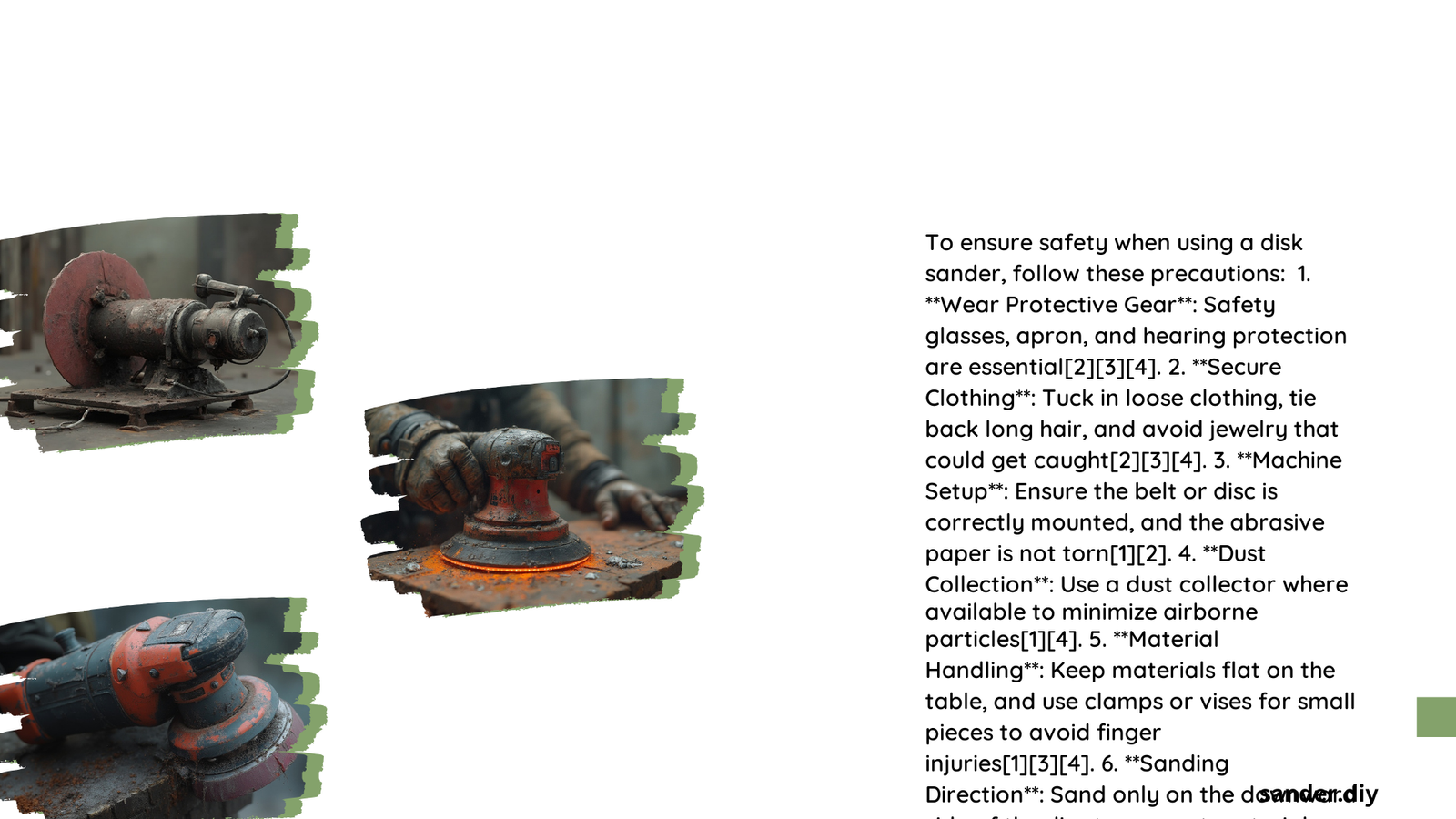Disk sander safety precautions are critical for preventing serious workplace injuries. Woodworkers must understand comprehensive safety protocols involving proper equipment handling, protective gear, operational techniques, and emergency preparedness. Implementing strategic safety measures reduces accident risks and ensures a secure working environment for professionals and hobbyists alike.
What Are the Primary Disk Sander Safety Risks?
Disk sanders present multiple potential hazards that require meticulous attention. Understanding these risks is fundamental to developing robust safety strategies. The primary risks include:
- Unexpected workpiece ejection
- Potential hand and finger injuries
- Dust inhalation dangers
- Electrical equipment malfunctions
- Entanglement with moving parts
How Should Operators Prepare Personal Protection?
Effective personal protection involves multiple layers of safety equipment:
| Protection Category | Recommended Equipment | Purpose |
|---|---|---|
| Eye Protection | Impact-resistant safety glasses | Prevent debris projection |
| Respiratory Protection | NIOSH-approved dust mask | Block fine particulate matter |
| Hearing Protection | Noise-canceling earmuffs | Reduce potential hearing damage |
| Clothing | Tight-fitting, non-loose attire | Minimize entanglement risks |
What Are Critical Operational Techniques?

Implementing precise operational techniques dramatically reduces accident potential:
- Workpiece Positioning
- Always position material from disc center towards left edge
- Maintain consistent, controlled movement
-
Use appropriate guides and supports
-
Machine Interaction
- Keep hands minimum 1-inch away from abrasive surface
- Never sand on upward disc motion
- Adjust rest within 1/8-inch of disc surface
How Can Emergency Risks Be Mitigated?
Emergency risk mitigation requires proactive planning:
- Install clearly marked emergency shutdown switches
- Maintain clean, unobstructed workspace
- Regularly inspect equipment for mechanical issues
- Develop comprehensive training protocols
- Create written emergency response guidelines
What Maintenance Practices Enhance Safety?
Regular maintenance significantly contributes to disk sander safety:
- Perform weekly equipment inspections
- Replace worn sanding discs immediately
- Lubricate moving parts according to manufacturer specifications
- Check electrical connections periodically
- Clean dust collection systems thoroughly
What Training Components Are Essential?
Comprehensive training should include:
- Detailed equipment operation manual review
- Hands-on supervised practice
- Written and practical safety examinations
- Regular refresher courses
- Incident reporting and analysis procedures
What Are Common Misconceptions?
Several dangerous misconceptions exist regarding disk sander usage:
- Believing experience eliminates need for safety precautions
- Assuming protective gear is optional
- Thinking quick movements reduce risk
- Neglecting regular equipment maintenance
Conclusion
Disk sander safety precautions demand continuous learning, vigilance, and respect for equipment capabilities. By integrating comprehensive safety strategies, woodworkers can create secure, efficient working environments.
